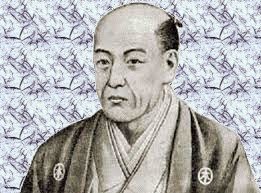He was one of the most famous graph type that traders follow is candlestick which is believed to be originated from ancient Japanese trading.
Table of Contents
Munehisa Homma: Who he was?
During year 1500-1600 there used to be sixty isolated provinces in ancient Japan. Separate Daimyo or feudal lords were mostly trying to conquer their nearby regions by act of wars. The period in Japanese history is called “Senogoku Jidai” or “Age of country at war”. Then came three extraordinary Generals- Nobunaga Oda, Hideyoshi Toyotomi and Jeyasu Tokugawa .They not only unified ancient Japan but also brought prosperity to the regions. During their rule from 1615 to 1867 the period is called as “Tokugawa Shogunate, Japan saw a centralized Japanese feudal system. Domestic trade eased and later expanded under their unified rule. By seventeenth century, national market had evolved to replace all local and isolated markets.
Munehisa Homma: Behind the first trading exchange in Japan
Hideyoshi Toyotomi regarded Osaka as Japan’s Capital and commercial centre. Situated near the sea, favourable for transportation and commercial activities, this city was called as “the kitchen of Japan”. In Osaka, Yodoya Keian became a war merchant working for General Hideyoshi. He gained extraordinary expertise in transporting, distributiing and setting the price of Rice. Rice exchange was set up in late 1600 in Osaka under Yadoya. Rice was graded and bargained for setting up price by rice merchants. After 1710, the Rice Exchange began to issue and accept rice warehouse receipts called rice coupons ( also called as “empty rice”). Thus world’s first future contract ever traded came into existence.
Munehisa Homma: And the Rice trade
Rice was the de facto medium of exchange then and there were 1300 rice traders for brokerage in Osaka. When a daimyo/ feudal lord has some extra surplus rice, he used to send the same in rice warehouse to get rice coupon in his name. During financial problem, daimyos would even sell rice coupon against their next rice tax delivery. In 1749 , there were a total 113,000 bales (unit) of rice coupon traded in Osaka yet throughout all of Japan there were 30,000 bales of rice available.
Munehisa Homma: The pioneer in trading history of world
Munehisa Homma was among the most famous people in Japan in the field of trading. He used past prices and even weather conditions to predict the future price movements in rice trading. He was born in 1724 and called “God of the markets”. In 1750 after taking control of his family business, he began trading in port city Sakata. “Sakata Rules” in candlestick literature refer actually to Homma. It is said he once executed 100 consecutive winning trades.
Later Homma became a financial consultant to the Government and was given the title of Samurai. His trading principles as applicable to rice market in future evolved into candlestick chart trading techniques.
It is said that in 1755 he wrote San-en-Kinsen Hiroku , The Fountain of Gold- The Three Monkey Record of Money, the first book on market psychology. In that it is said that trader’s emotion have significant influence on prices. Ho noted that “when all are bearish, there s cause for prices to rise” . His prestige was such that there was the folk song in Edo (former Tokyo) : “When it is sunny in Sakata (Homma’s town), it is cloudy in Dojima (the Dojima Rice Exchange in Osaka) and rainy at Kuramae (the Kuramae exchange in Edo).” Homma died in year 1803.
Credit: Some informations are taken from Steve Nilson’s book.
https://www.youtube.com/@wizbullfin/
How rich was Munehisa Homma?
He reached to financial consultant to the Government and was given the title of Samurai. During his period Samurai controlled most of the trades and powers.
Who is the father of Japanese candlestick?
Honma is sometimes said to have used rice trade patterns which now a days we see as Japanese Candlesticks.
Who is known as the god of trading?
Honma, the man in ancient Japan who believed to have introduced trading (rice exchange) is known as the “God of the markets”.


